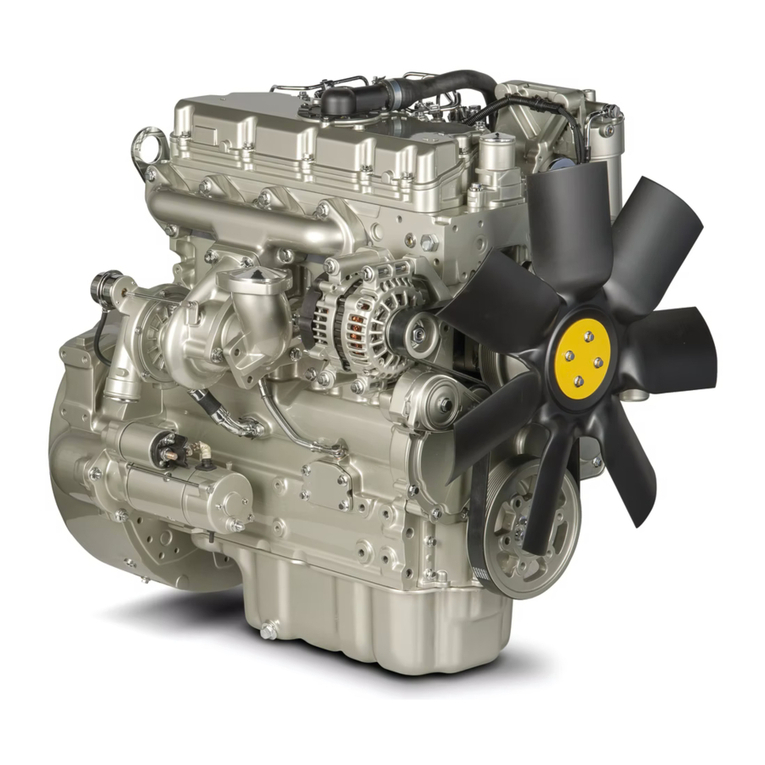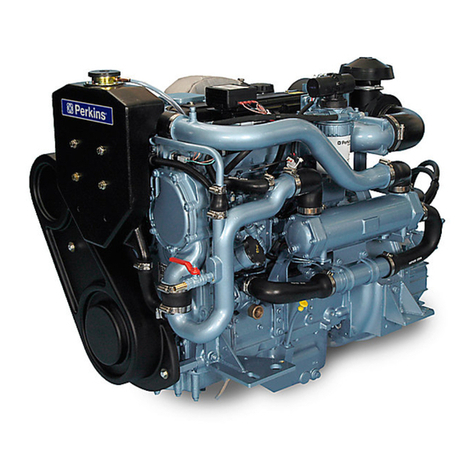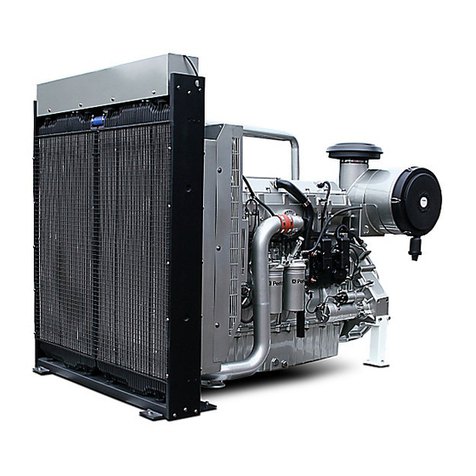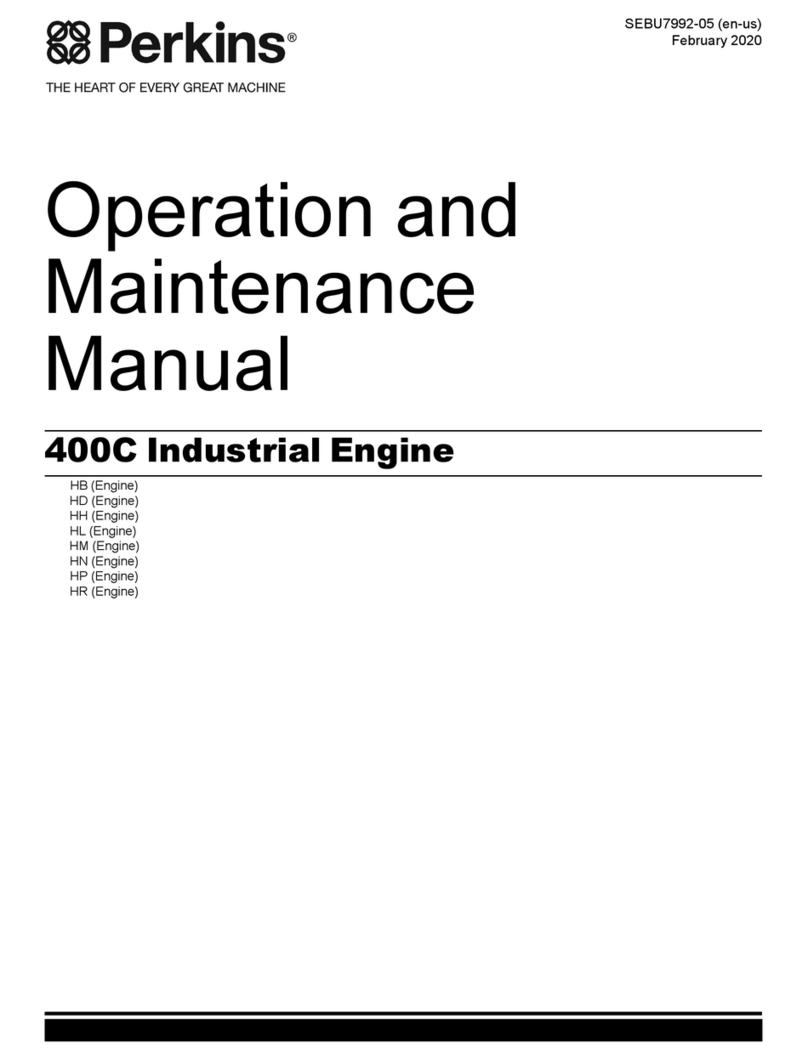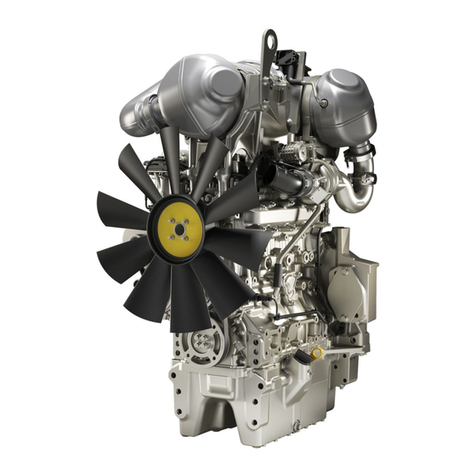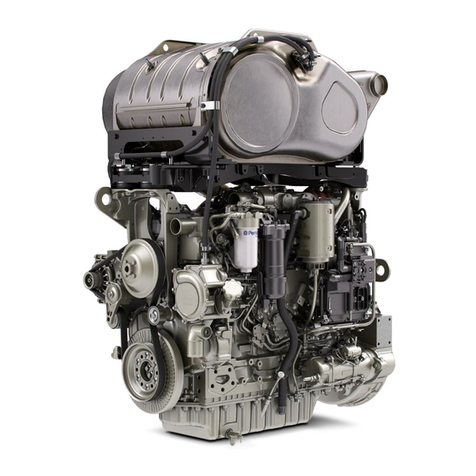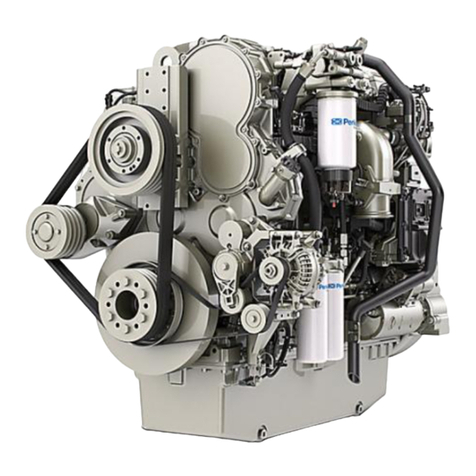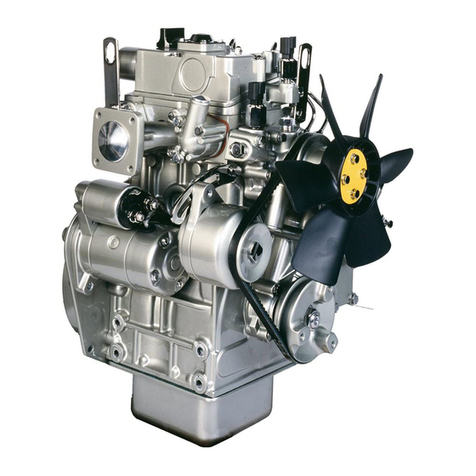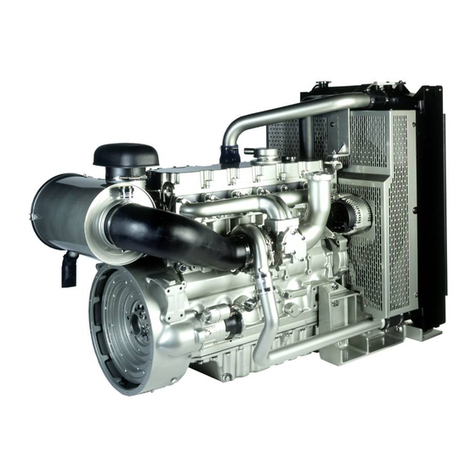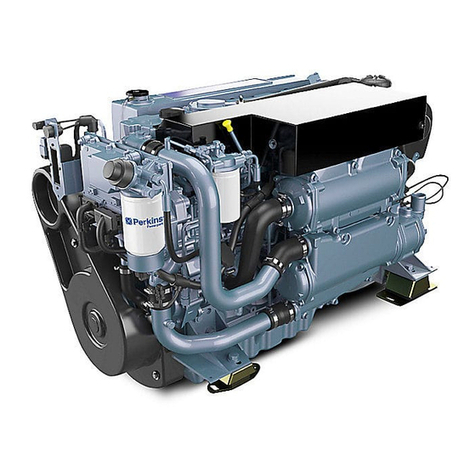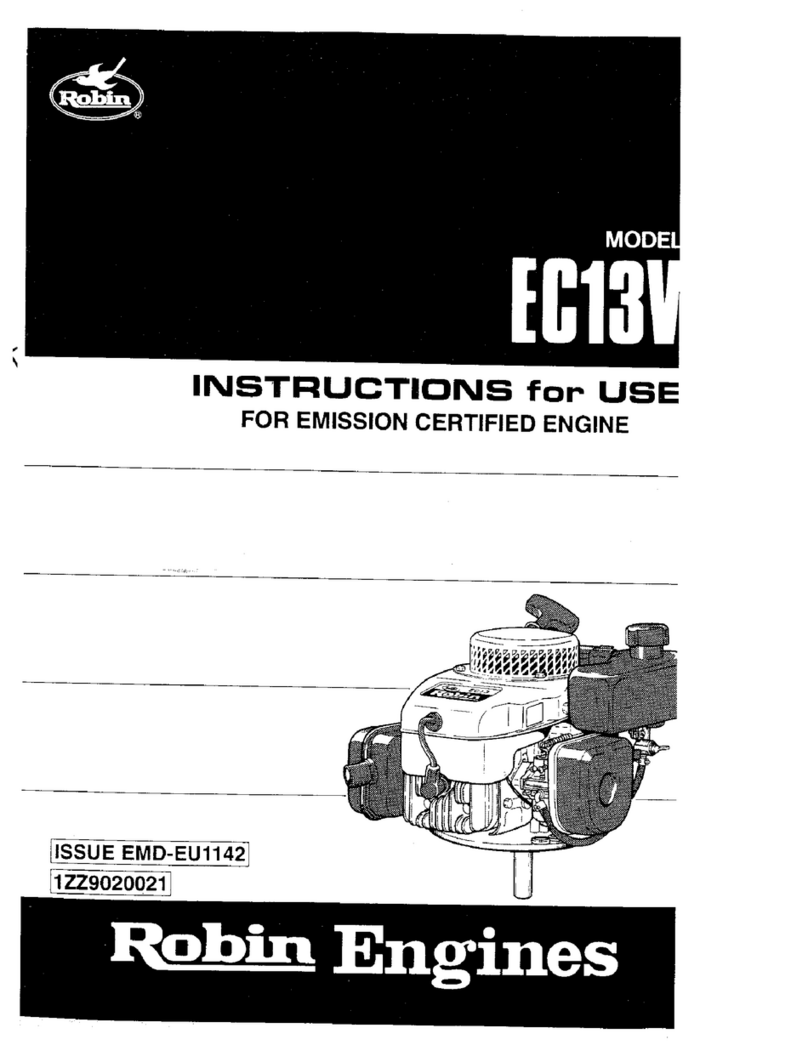
Air Inlet and Exhaust
System
i06515116
Air Inlet and Exhaust System
The components of the air inlet and exhaust system
control the quality and the amount of air that is
available for combustion. There are two separate
turbochargers that are installed on the rear of the
engine.
The hot charge air from the turbochargers is directed
by large air pipes to the aftercooler. The cooling of
the charge air is achieved by inserting this additional
radiator in front of the normal radiator that cools
water. The single radiator fan pushes air through
each matrix in series. The air passes through the
matrix for charge air. After the air passes through the
radiator for charge air, the air is directed through
pipes that have a large bore to the air intake
manifolds.
The camshaft controls the movement of the valve
system components and injectors.
Illustration 1 g01188937
Air Inlet And Exhaust System
(1) Exhaust manifold
(2) Aftercooler
(3) Engine cylinder
(4) Air inlet
(5) Turbocharger compressor wheel
(6) Turbocharger turbine wheel
(7) Exhaust outlet
Clean inlet air from the air cleaners is pulled through
air inlet (4) into the turbocharger compressor by
compressor wheel (5). The rotation of the
compressor wheel compresses the air. The rotation
of the turbocharger compressor wheel then forces
the air through a tube to aftercooler (2). The
aftercooler lowers the temperature of the
compressed air before the air enters the inlet
chamber in each cylinder head. Air flow from the inlet
chamber into the cylinder heads is controlled by the
inlet valves.
There are two inlet valves and two exhaust valves for
each cylinder. Refer to Systems Operation, “Valve
Mechanism”. The inlet valves open when the piston
moves down on the inlet stroke. The cooled,
compressed air is forced into the cylinder from the
inlet chamber.
The inlet valves close and the piston starts to move
up on the compression stroke. When the piston is
near the top of the compression stroke, fuel is
injected into the cylinder. The fuel mixes with the air
and combustion starts. The force of the combustion
pushes the piston downward on the power stroke.
When the piston moves upward again, the piston is
on the exhaust stroke. The exhaust valves open and
the exhaust gases are pushed through the exhaust
port into exhaust manifold (1). After the piston makes
the exhaust stroke, the exhaust valves close and the
cycle starts again.
Exhaust gases from exhaust manifold (1) go into the
turbine side of the turbocharger. The exhaust gases
cause turbine wheel (6) to turn. The turbine wheel is
connected to the shaft that drives the turbocharger
compressor wheel (5). The exhaust gases exit
through exhaust outlet (7).
i02856821
Valve Mechanism
The valve system components control the flow of the
inlet air and the exhaust gases into the cylinders and
out of the cylinders during engine operation.
The crankshaft gear drives the camshaft gears
through idlers. The camshaft must be timed to the
crankshaft in order to get the correct relation between
the piston and the valve movement.
The camshaft has three lobes for each cylinder. Two
lobes operate the valves and one operates the fuel
injector.
As the camshaft turns, the lobes on the camshaft
cause lifters to move up and down. This movement
causes pushrods to move rocker arms. The
movement of the rocker arms cause bridge pieces to
move downward. The bridge pieces open two valves
simultaneously. The valves can be either inlet valves
or exhaust valves. There are two inlet valves and two
exhaust valves for each cylinder.
M0064276 5
Air Inlet and Exhaust System


